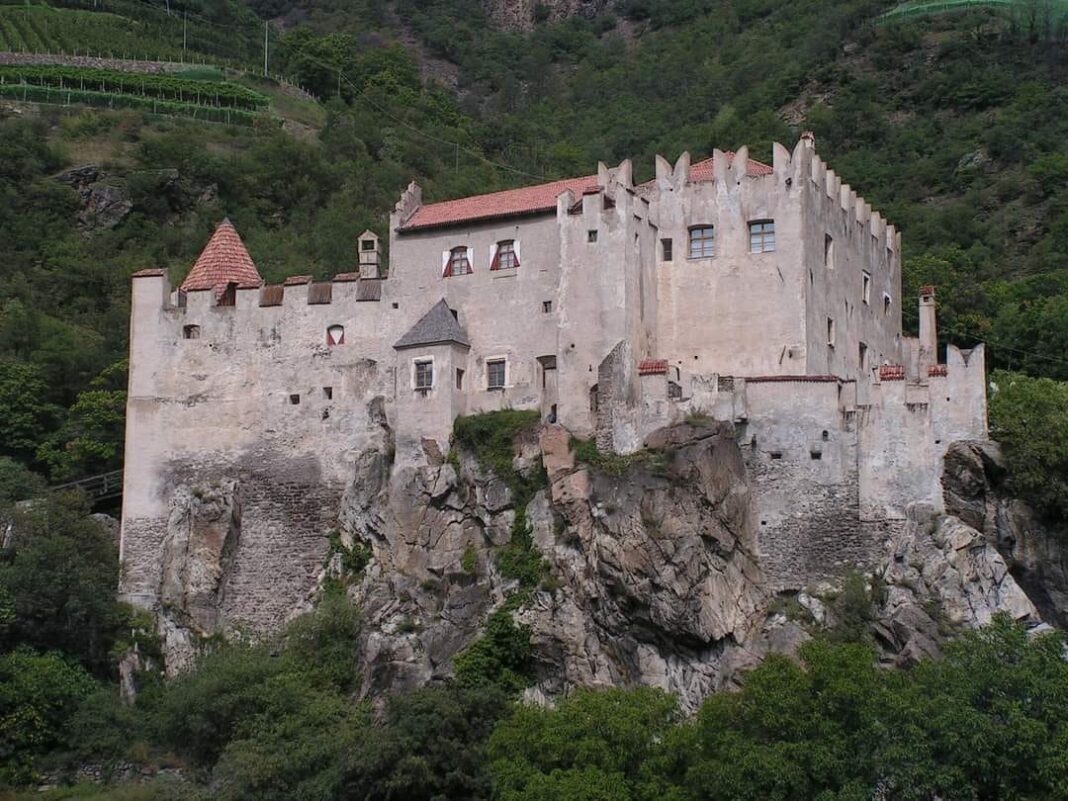Castelbello Castle is one of the world’s most beautiful castles and (sometimes simply Castelbello, in German: Schloss Kastelbell) is located in Castelbello-Ciardes, in Val Venosta, Italy.
History
Ancient View of the Castle
The first documented traces of the castle date back to 1238. It was built by the lords of Montalban, vassals of the counts of Tyrol, to whom the Castle passed after 1200.
Subsequently, from about 1300, the Castle was a judicial seat. Following some ownership exchanges, in 1531, it became the property of Counts von Hendl, who restructured the Castle and enlarged it in some parts, giving it its current appearance.
Between 1813 and 1824, the Castle was hit by numerous fires, which destroyed it. Only a part, used as a dwelling, was rebuilt by the owners. The rest was left in ruins.
Finally, after years of legal battles with Count von Hendl in 1956, the Italian state bought the Castle for 31,068 lire.
After some initial renovations in the 1960s, a complete renovation was completed in 1995.
In 1999 the Castle was given in concession to the municipality, which, in turn, entrusted its management to a cooperative.
Today the Castle is open to the public and used for exhibitions and concerts.
To visit
The internal courtyard has a very narrow plan and is characterized by a lowered round arch which connects the two parts of the Castle through a passage with a wooden roof placed above. The chapel, located on the first floor of the north wing, was built in the fourteenth century. What remains of the frescoes has a simple architectural structure with a turret and mullioned window on a rectangular plan.
In the apse, the Annunciation is depicted, in the vault, Christ’s blessing surrounded by the symbols of the four Evangelists together with the coat of arms of Tyrol and the Hendl family.
On the back wall, God is represented holding up the cross and below Jesus crucified; this representation usually foresees the presence of the Dove of the Holy Spirit between the two figures to represent the Trinity; in this fresco, on the other hand, the unusual presence between the two figures of Mary and the Child can be observed. On the side, walls are represented by the Apostles and Saints. In 2001, the frescoes in the apse and the side walls were restored.
The old kitchen (Alte Kuchl) in the southern area of the Castle, the inner courtyard, and above all, the Via Claudia Augusta exhibition, the main Roman road that crossed the Val Venosta.



